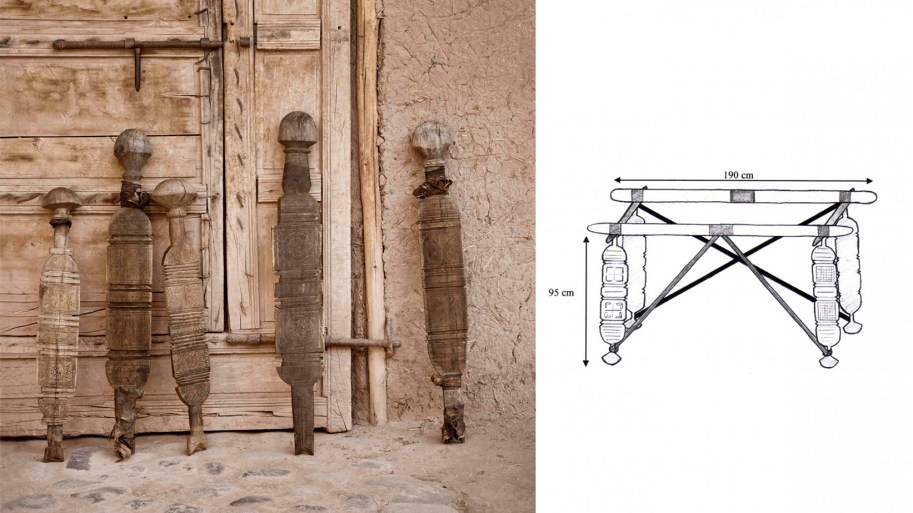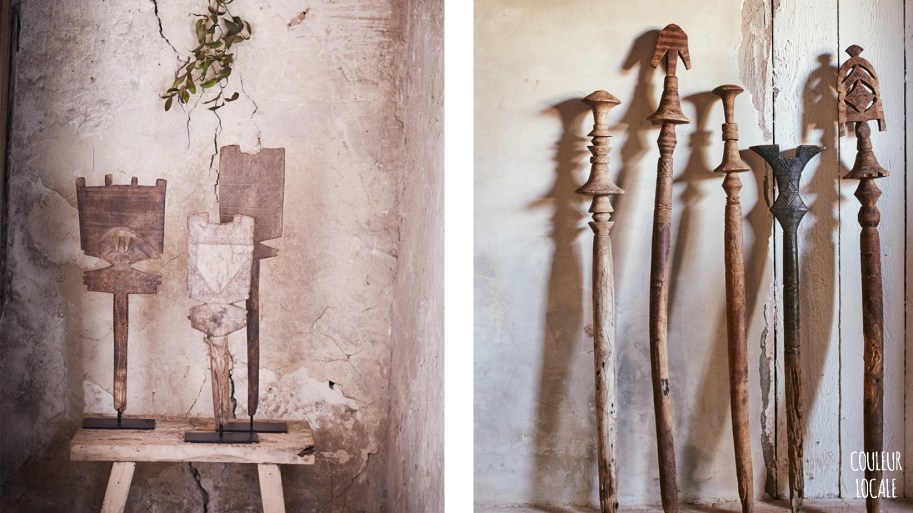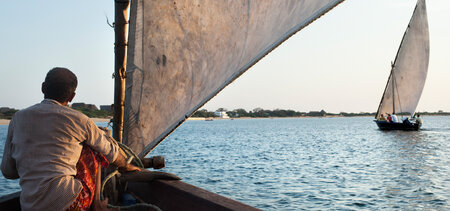The Tuareg and their utensils

During various travels through Africa we have pieced together a beautiful collection of utensils and tools used by the Tuareg tribe. All unique pieces telling a true story. But who are these mysterious nomads whom have lived in the Sahara for centuries and inspire and excite our curiosity and imagination.
Blue men, indigo and Inadan
The Tuaregs are best known for their indigo veils worn by the men. They cover their faces at puberty and will keep them covered in front of their elders and most women. The traditional face veil is dyed with natural indigo, which stains their skin and leads to the name ‘Blue men of the Sahara’ or ‘Men of the Veil’.

“IT WOULD BE AS DISHONOURABLE FOR A MAN NOT TO WEAR HIS VEIL AS NOT WEARING HIS PANTS.” CHARLERS DE FOUCAULT
For centuries they controlled the caravan routes through the desert. They played a large role in the slave trade and were active in trading salt, dates, saffron, gold and glass. Tuareg men enjoy a warrior reputation and traditional societies are based on a system of castes.
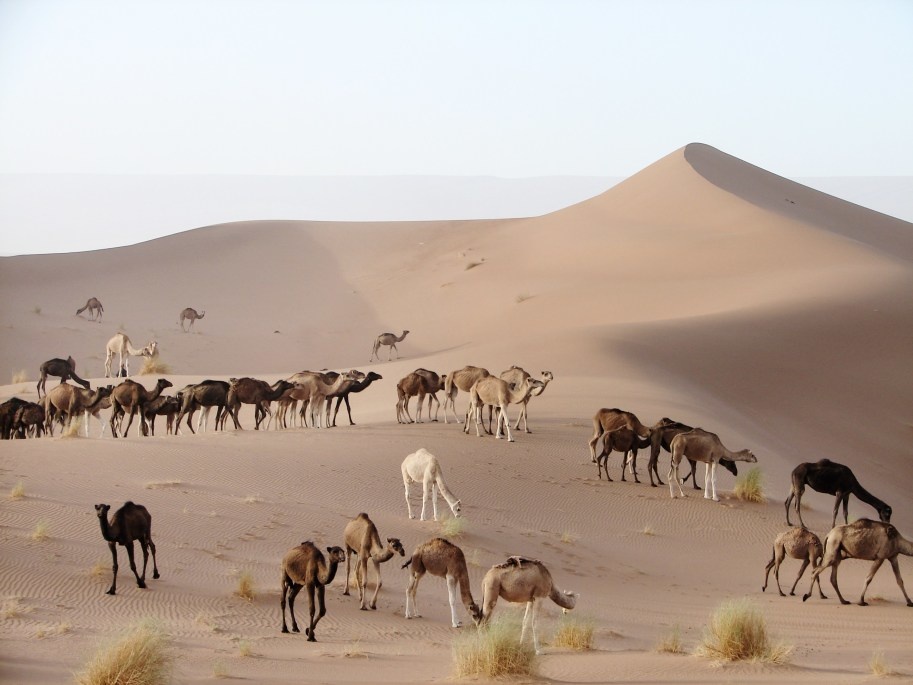
The ‘Inadan’ is a caste of artists and smiths living at the bottom of society. Inadan is a closed caste, someone is born as an artisan but can never become one. They believe that the craft is in one’s blood and no one outside the family may venture to work. Their most prestigious work is considered to be a leathern decorated dromedary saddle.
After leather, wood is perhaps the most important material in Saharan daily life. Wood is cherished in harsh environments such as the Sahara . It is used in a number of utensils from bowls to tent poles.
Nomads, camels and luggage carriers
The Tuaregs have survived in the harsh Saharan environment for thousands of years and consider it to be home. Freedom comes first above all, they go wherever and whenever they choose. They aren’t influenced by boarders nor passports and travel across countries with their trusted camels.
They transport their tents with a sedan chair which they place on their camels. A sedan chair is formed from 4 wooden sticks, ‘ame ssaggab’, which are attached with crossbars using either goat or camel leather. In this chair, the woman of the house sits together with the small children and lambs.
Within the camp it is turned upside down and acts as a table or to store personal items.
The 4 wooden sticks of each chair are engraved with simple geometric motifs making them unique collector’s items for in your house.
Tuareg women, tents and pickets
Behind the simple traditions of the Tuareg hides a progressive culture which makes us as westerner’s blush. The Tuareg women may have multiple sexual partners before marriage, as long as it is done discretely. She doens’t have to wear a veil and has ownership of the tent and cattle. If a married couple gets divorced the husband not only loses his wife but also the tent and his accommodation. Women are respected by men and their opinions are highly valued.
The mother’s tent is the heart of the family. It is made of a traditional wooden structure, old pieces of clothing, linen and goat skin mats which are sown together. The tent is anchored into the sand with tent pickets. Each picket has its own unique design and function.
4 ‘Ehel’ pickets are placed inside the tent to hold the wall mats, ‘eseber’ in place. These mats are placed around the bed to create a form of privacy.
In addition, forked supports ‘tigettewin' are used to hang clothes and leather bags on or as an extra support for a separate bar which carries a camel saddle.
The entrance to the tent is carried by a pair of pickets, ‘Igem’ that match together.
All these beautiful tools are made from extremely hard wood and are decorated with geometric abstract designs, the typical Tuareg signature. We are absolutely fond of their simplicity, unique details and naturally warm colours.
Millet, Jacks and Gourds
Once a week the villages in the Southern Sahara come to life on the local markets. The camels wheedle themselves in the sand while negotiations are done with humor. The caravans from the North show their goods. Salt and dates are exchanged for millet.
Millets have been important food staples in human history, particularly in Asia and Africa and still forms the staple diet for the caravaneer’s family. A gourd is used to clean the grain before grinding it into flour in a wooden mortar.
Mashed millet together with dates, cheese and water are the ingredients of the traditional recipe ‘eghajira’. We already have an big collection of these lovely big wooden mortars. Outside we use them as flowerpots, while inside they become a piece of art.
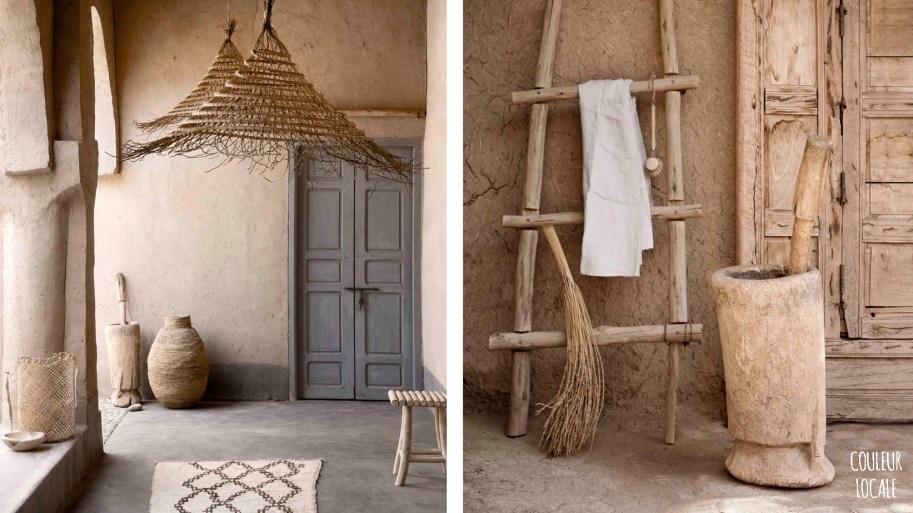
Each of these unique items reflect the beauty of this fascinating tribe. They make us dream from fareway places where the wind and the sand blow away the tracks of its visitors. Where under the sweltering sun one of Africa’s last nomadic society fights for their survival. Where with love, dedication and craftsmanship unique objects are made that decorate our houses. And where we ourselves hope to one day wander around in an indigo veil as well.
Tuareg image © Serge Anton / other images © Couleur Locale (please do not use without our written permission)


